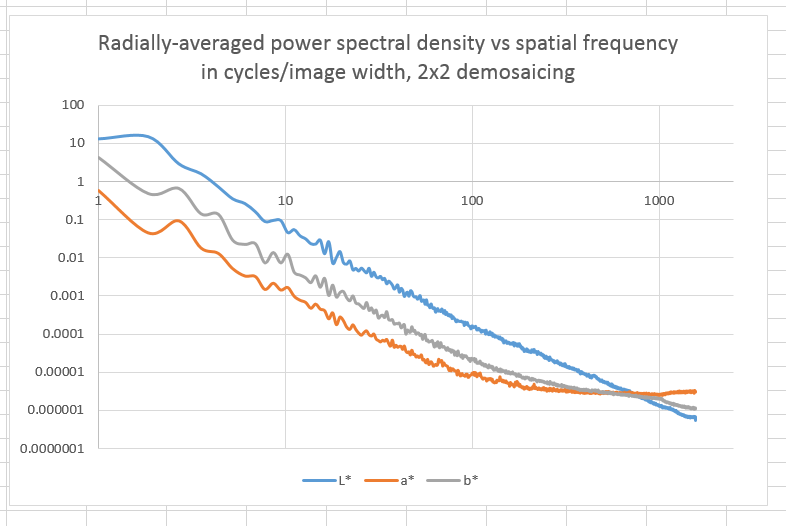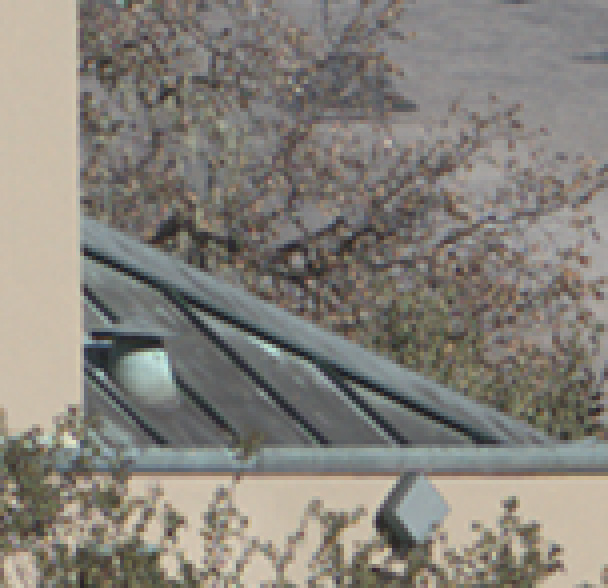I reworked the luminance step wedge of yesterday’ post so that it consists of 10 Delta-E steps from zero to 80 along the gray (a* = 0, b* = 0) axis: The Mach Bands are evident. Then I created a similar image, with L* = 50, b* = 0, and a* starting at -40 and… [Read More]
Archives for 2014
Mach banding
Inspired by the last three posts, I’m starting a series of posts on spatial considerations in color vision, which an emphasis on what’s important to photographers. We’ll get started today with an illustration: Take good look at this image from a normal viewing distance: The bars are even steps along the grey axis in a… [Read More]
Luminance and chromaticity vs spatial frequency, part 2
I ran the FFT analysis of yesterday’s post on a couple of more images. First, this old chestnut (thank you, Fuji): Here’s what I got: For the last three octaves of spatial frequency, the two chromaticity components are about the same distance below the luminance component. Then there’s this image (thank you again, Fuji): Here’s… [Read More]
Luminance and chromaticity vs spatial frequency
There was a great thread on the dpreview forum started by Jack Hogan (who has also posted in this blog), about anisotropy in anti-aliasing filters. In the generally erudite and productive discussion that followed, someone (I’d give him credit, but I don’t know his real name) made these comments about demosacing: From a reconstruction perspective,… [Read More]
Color photography without demosaicing in the real world
Today I continue exploring using a technique to produce half-sized images from sensors with Bayer color filter arrays (CFAs). The technique was described here, and the way I’m implementing it was explained here. I started with a raw file of this scene, photographed with the Sony a7R and the Sony/Zeiss 55mm f/1.8 Sonnar FE (aka… [Read More]
- « Previous Page
- 1
- …
- 39
- 40
- 41
- 42
- 43
- …
- 62
- Next Page »




